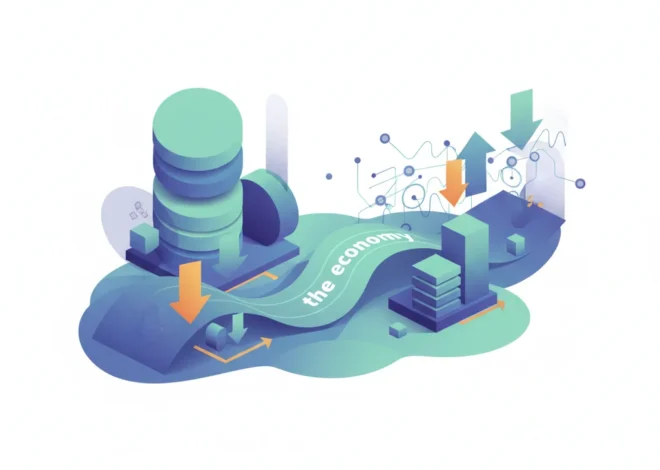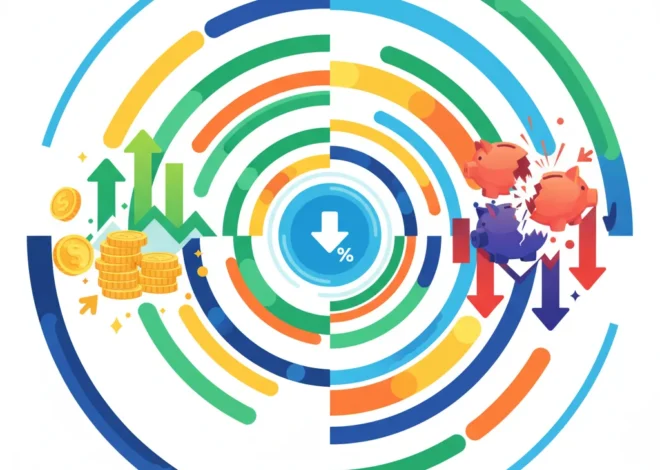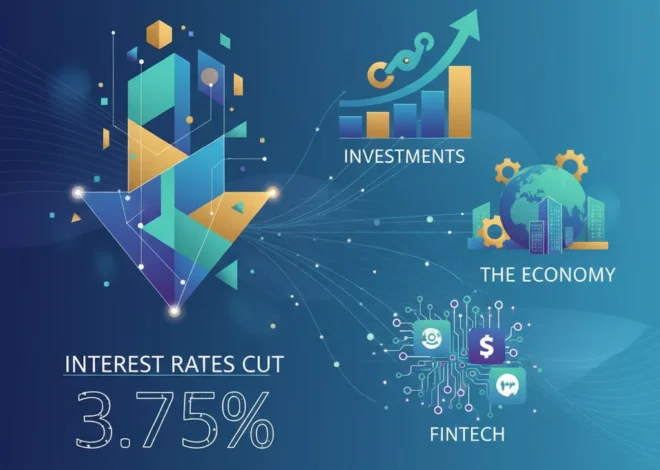
Beyond the Ivory Tower: How ‘Altmetrics’ Are Redefining the Impact of Financial Research
The Hidden Engine of Market Innovation: Academic Research
In the fast-paced world of finance and investing, where multi-billion dollar decisions are made in microseconds, the source of the next big idea is a constant obsession. We often credit visionary entrepreneurs or daring traders for breakthroughs in financial technology. However, the foundational concepts—the complex models, economic theories, and behavioral insights that underpin these innovations—frequently originate not on the trading floor, but within the quiet halls of academia.
For decades, the influence of a business school research paper was measured by a slow, insular process: citations in other academic journals. This traditional method, known as bibliometrics, was a reliable indicator of influence within the academic community, but it failed to capture a crucial element: real-world impact. Did a paper on risk management actually change how banks operate? Did a study on consumer behavior influence a new fintech app? The old metrics couldn’t tell us.
Now, a new paradigm is emerging. Known as ‘altmetrics’—or alternative metrics—this approach seeks to measure the immediate, widespread dissemination of ideas beyond academia. It tracks mentions in news articles, discussions on social media, citations in policy documents, and shares in professional networks. As this method gains traction, it’s forcing a radical rethink of how we measure influence, with profound implications for the entire financial ecosystem, from individual investors to global leaders in banking and economics.
Traditional Metrics vs. The New Digital Footprint
To understand the disruptive power of altmetrics, it’s essential to contrast them with the established system. Traditional bibliometrics are methodical and rigorous, but they operate on a timescale that feels archaic in the digital age. A groundbreaking paper might take years to accumulate a significant number of citations, long after its ideas have already started to permeate the stock market or inspire new trading strategies.
Altmetrics, by contrast, offer a real-time snapshot of a paper’s journey into the public consciousness. They capture the “buzz” around research, providing immediate feedback on which ideas are resonating with journalists, policymakers, and industry practitioners. This shift represents a move from measuring purely academic validation to gauging broader societal and economic relevance.
Here is a breakdown of how these two approaches differ:
| Feature | Traditional Bibliometrics | Alternative Metrics (Altmetrics) |
|---|---|---|
| Primary Indicators | Journal Impact Factor, Citation Counts, H-index | Social Media Shares (Twitter, LinkedIn), News Mentions, Policy Document Citations, Blog Posts, Wikipedia References |
| Time Horizon | Slow; impact measured over years or decades | Fast; impact is visible in days or weeks |
| Audience Measured | Primarily academic peers | Academics, practitioners, policymakers, journalists, and the general public |
| Key Strength | Measures rigorous, peer-vetted academic influence | Measures broad, real-world reach and immediate engagement |
| Potential Weakness | Fails to capture impact outside of academia; slow to reflect influence | Can be gamed; may prioritize popularity over quality and rigor |
This new approach is championed by platforms like Altmetric, a company that tracks where published research is mentioned online. According to their data, the most discussed business school research often focuses on timely and practical topics like leadership, gender diversity, and corporate strategy—subjects with immediate relevance to business leaders and the wider economy. For instance, a 2021 study from the University of Cologne on CEO behavior during the pandemic became one of the most-mentioned papers, a feat that would have been impossible to quantify using traditional metrics alone.
AI Hype and Hidden Debt: Are We on the Brink of the Next Financial Crisis?
Why This Matters for Your Investment and Business Strategy
For professionals in finance, investing, and business leadership, the rise of altmetrics isn’t just an academic curiosity; it’s a new source of actionable intelligence. Tracking the digital footprint of research can provide a powerful leading indicator of emerging trends, risks, and opportunities.
Consider a research paper detailing a novel application for blockchain technology in supply chain finance. Under the old model, investors might not hear about it for years. With altmetrics, you could see it being debated by fintech developers on Twitter, analyzed by industry bloggers, and referenced in early-stage startup pitch decks. This provides an early signal, allowing savvy investors and strategists to get ahead of the curve. The ability to see which economic theories are gaining traction among policymakers can inform macroeconomic forecasts and guide adjustments to a trading portfolio.
Furthermore, businesses can leverage altmetrics to identify and recruit top-tier thought leaders. An academic whose work consistently generates high altmetric scores is not just a researcher; they are an influencer whose ideas are shaping the industry conversation. For a bank developing a new AI-driven risk model or a firm exploring decentralized finance (DeFi), collaborating with such an individual could provide a significant competitive edge. As Jean-Philippe Bonardi, dean of HEC Lausanne, notes, this visibility helps bridge the gap, as “companies and the media can see what we are doing and how it is relevant to them (source).”
However, we must be cautious. Altmetrics measure attention, not necessarily quality or validity. In an era of social media echo chambers and “rage bait,” a controversial or even flawed paper could generate a massive altmetric score, while a more nuanced, methodologically sound study goes unnoticed. Investors and leaders who rely on this data must learn to distinguish between genuine, expert-driven engagement and fleeting, low-quality viral buzz. The future likely lies in a hybrid approach: using altmetrics to surface trending ideas quickly, then applying traditional, rigorous analysis to vet their true substance before making any critical decisions.
The Perils of Popularity: Criticisms and Unintended Consequences
Despite their potential, altmetrics are not without their critics. The most significant concern is that they risk creating an academic culture that values popularity over substance. If a researcher’s success is measured by retweets and media mentions, will they be incentivized to pursue headline-grabbing, easily digestible topics at the expense of complex, long-term research that could have a more profound, albeit delayed, impact on economics?
Usha Haley, a professor at Wichita State University, raises this very point, warning that these metrics can favor “the banal and the simple over the complex and profound.” This creates a potential danger for the financial world. The most important breakthroughs in quantitative finance or economic theory are often dense and counterintuitive, unlikely to go viral on social media. An over-reliance on altmetrics could systematically devalue the very kind of foundational research that drives the industry forward in the long run.
Another major challenge is the potential for manipulation. Just as companies can buy followers or use bots to inflate their social media presence, the same tactics could be used to artificially boost a research paper’s altmetric score. This “gaming” of the system could mislead investors, policymakers, and the public about the true consensus on a given topic, with potentially disastrous consequences for the stock market and the broader economy.
The Pizza Hut Paradox: A Financial Autopsy of a Fallen Giant
The Future of Research Intelligence: A Hybrid Approach
The debate between traditional metrics and altmetrics is not a zero-sum game. The most likely future is one where both are used in concert to create a more holistic, three-dimensional view of a research’s impact. Traditional citations will remain the gold standard for measuring rigorous, peer-validated academic influence, while altmetrics will provide an indispensable layer of real-time data on public and industry engagement.
For investors and business leaders, the key is to develop the sophistication to use these new tools wisely. This means:
- Looking Beyond the Numbers: Don’t just look at the score; analyze the context. Who is discussing this research? Are they credible experts or anonymous accounts? Is the discussion substantive or superficial?
- Combining Data Sources: Use altmetrics as a discovery tool to identify trending research, but then fall back on traditional vetting. Is the research published in a reputable journal? Have other experts in the field validated or challenged its findings?
- Focusing on Relevance: The ultimate test is not how many times a paper is tweeted, but whether its ideas can be translated into a sound business strategy, a profitable investment, or a more efficient market.
As the worlds of academia and finance become ever more intertwined, understanding how ideas are generated, disseminated, and adopted is no longer an abstract exercise. Altmetrics, for all their flaws, offer a tantalizing glimpse into the real-time lifecycle of innovation. By learning to harness this data while respecting the rigor of traditional validation, we can unlock a powerful new lens through which to view the future of the global economy.
High Stakes in Asia: Decoding the Trump-Xi Summit and Its Impact on the Global Economy


